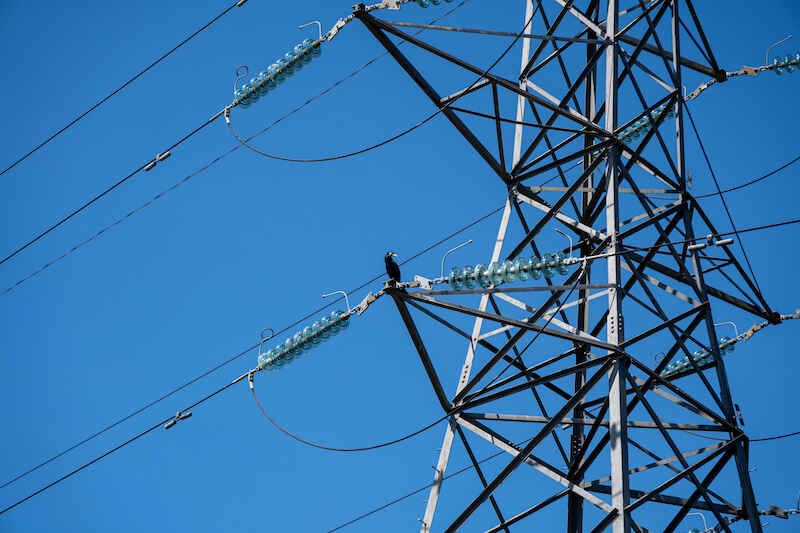British Electricity System Got Dirtier in 2021

Britain’s power grid got dirtier in 2021 for the first time in eight years as demand rebounded from lockdowns and low wind speeds and nuclear outages left the country relying on natural gas to keep the lights on.
According to National Grid Electricity System Operator (ESO) and as reported in the Times, the carbon intensity of the grid—the average emissions associated with each unit of electricity supplied—increased from the record lows seen in 2020, the first year-on-year increase since 2013.
A provisional analysis of the year’s fuel mix by Carbon Brief (official figures will follow from the ESO and eventually from BEIS) found that both gas and coal-fired electricity generation increased in 2021, while wind and nuclear output declined, both in absolute terms and as proportions of the mix.
Wind farm output was nearly 15% lower than in 2020, despite the installation of new wind turbines, as a result of historically low wind speeds. The period between April and September was the least windy period in 60 years for most of the UK.
In the year to 22 December, wind’s share of electricity generation fell to 19%, from 23% in 2020, Carbon Brief found.
Nuclear generation was down 10% year-on-year to its lowest levels since 1982, with several reactions in Britain’s ageing nuclear fleet sidelined for maintenance. Overall, nuclear accounted for just 14% of Britain’s electricity generation and will likely slide still further over the next few years as reactors are retired.
EDF has confirmed that Hinkley Point B and Hunterston B will shut in 2022, ahead of their planned closure dates in 2023, as a result of cracks in their graphite cores. They’ll be joined in retirement by two more plants (Hartlepool and Heysham 2) before the country’s first new nuclear reactor in 30 years—Hinkley Point C—is connected to the grid in 2026.
To fill the gap, gas generation was up by a tenth to account for 37% of the fuel mix, compared to 34% in 2020. That’s made the surge in wholesale natural gas prices—up ninefold since last December—even more damaging, with electricity prices also soaring.
Coal generation was up 15%, despite the government’s pledge to remove it from the electricity system entirely by 2024. While coal’s share of the fuel mix remained below 2%, there were just 83 coal-free days across 2021, compared to 180 the previous year.
Electricity imports also increased, from 5% to 8% of Britain’s electricity supply, as new subsea power links to France and Norway came online. The government expects the share of imports to increase to 20% by 2025, as new power links allow electricity systems reliant on intermittent renewables to be balanced across Europe.
Meanwhile, total electricity demand partly recovered from the disruption of 2020. But with some restrictions still in place, consumption remained well below the pre-pandemic levels of 2019.
National Grid said the rise in emissions in 2021 represented a return nearer to normal after the“extraordinary” conditions of 2020 when the coronavirus pandemic dramatically depressed electricity demand. Fintan Slye, executive director of the ESO, said 2021 was still “one of the greenest years on record for Britain’s electricity system, a trend we expect will continue in the years ahead.”
National Grid also pointed to the progress made in reducing the system’s emissions over the last decade. The carbon intensity of the grid has fallen steadily from 529g of carbon dioxide per kilowatt-hour in 2013 to 181g in 2020. It was up modestly, to 187g, in 2021.
The government has committed to achieving a net-zero grid by 2035, and the ESO says the system will have its first gas-free hours by 2025. But Carbon Brief says this year’s figures show that the electricity system has a long way to go.
Simon Evans, deputy editor at Carbon Brief, said: “Coal power is still on the way out in the UK, even though this year hasn’t been very windy and demand has increased as the economy recovers from Covid lockdowns. But the government’s ambition for 100 per cent clean power by 2035 means ending the electricity system’s heavy reliance on gas, which has also driven spiralling recent cost increases.”
Read on our blog

With the government poised to implement tough new measures to...

Budget broadband provider TalkTalk has been notifying customers via email...

A year-long investigation by charity Citizens Advice has revealed a...

Education Secretary Nadhim Zahawi has announced a new commitment to...
